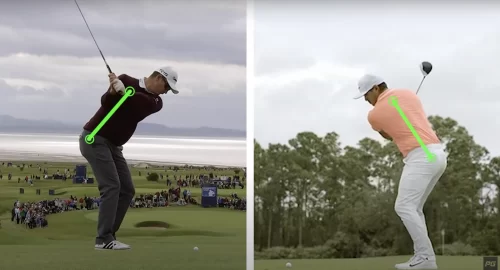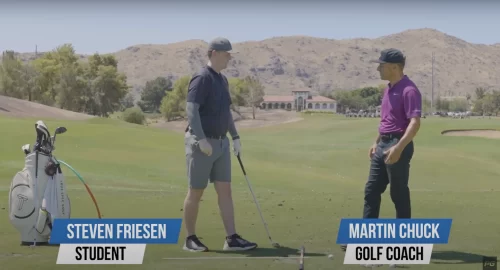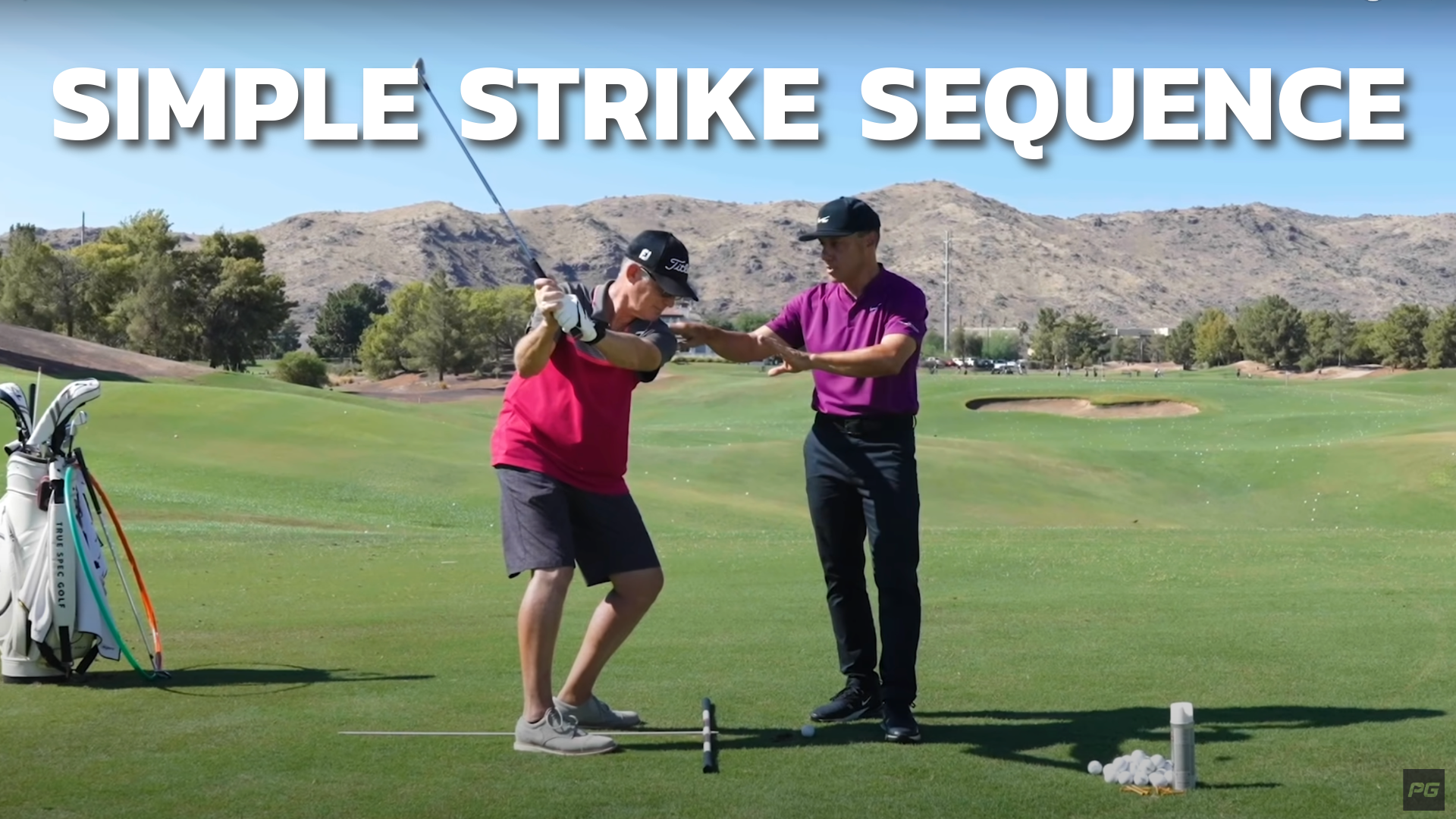
Golf is a game of precision and patience that can often frustrate amateurs struggling with inconsistent shots. One of the most common issues new golf players face is hitting fat or thin shots.
In a recent Performance Golf YouTube coaching session, top golf instructor Martin Chuck shared his revolutionary method called the “simple strike sequence” which helps golfers achieve better contact consistently. Let’s discuss the key takeaways from this lesson, so you can hit the ball flush every time.
Identifying the Golf Swing Problem
During the warm-up session, golfer Jeff exhibited a common fault: hitting the ground before the ball, known as a “chunker.” This issue arises when the low point of the swing is behind the ball, leading to poor contact. When watching professional golf, one thing you’ll notice is that their divots are always in front of the ball, indicating that they struck the ball first, then the ground.
The True Bottom of the Golf Swing
The actual bottom of the golf swing is much further forward than most amateur golfers realize. This small but important detail is a game-changer, as it shifts the focus from trying to hit the ball to understanding the swing’s dynamics. Coach Chuck emphasized the importance of knowing where the low point of the swing should be for the most effective ball striking.
Two Simple Drills for Better Contact
Drill 1: No Turn Backswing
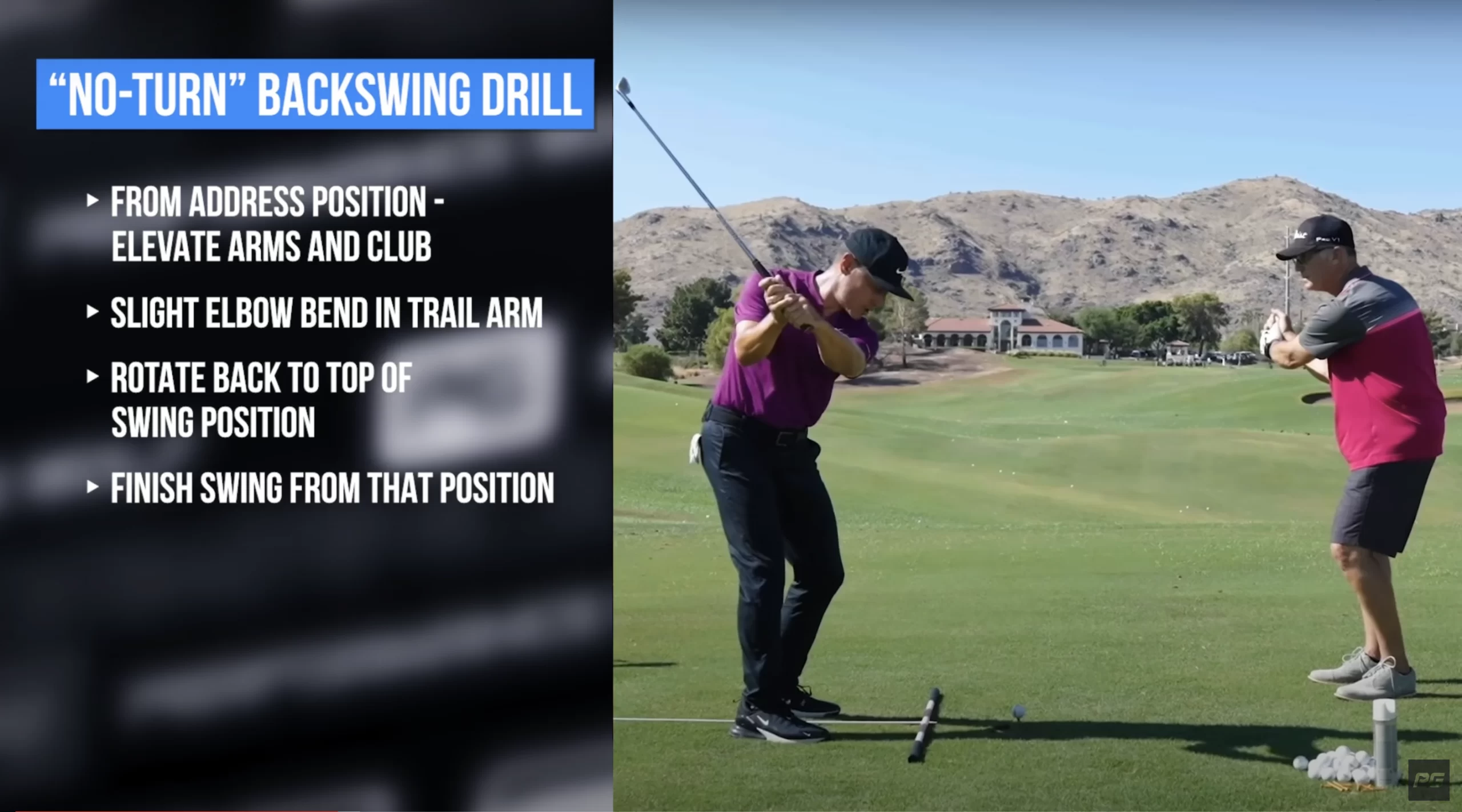
This drill helps golfers understand the correct top-of-backswing position without unnecessary complexity. The key is to maintain the correct posture and arm positions, allowing for a more straightforward and reliable downswing. By practicing this drill, golfers can simplify their swings and ensure that the clubhead reaches the bottom of the swing at the right moment.
Drill 2: Low-Point Control Drill
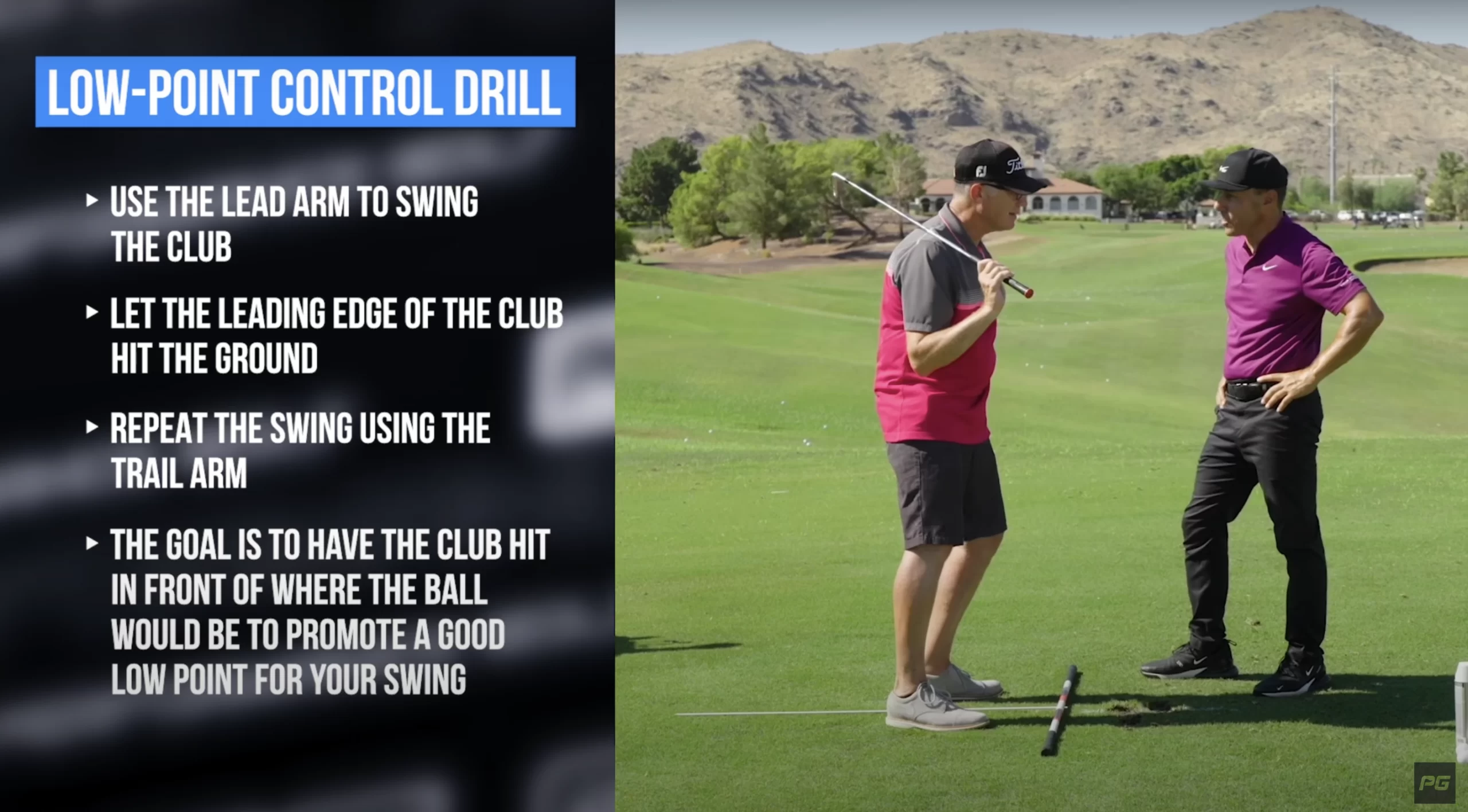
The second drill focuses on adding rotation to the swing. Many golfers fail to rotate their chests adequately, leading to poor contact.
By practicing the rotation, golfers can learn to let the chest lead the swing, ensuring that the clubhead strikes the ball at the correct low point. This drill builds on the no-turn backswing, adding the necessary body movement for a complete and effective swing.
Applying the Drills in Practice
After a few rounds of drills, Jeff was able to elevate the club to the sweet spot on the ball, maintain proper wrist conditions, and ensure a smooth, controlled backswing. The drills can help any amateur golfer understand how to use their body to guide the club into the correct impact position, avoiding the common faults of stalling and scooping.
With the right guidance and practice, anyone can correct their swing faults. The simple strike sequence, with its emphasis on understanding the true low point of the swing and practicing the no-turn backswing and rotate and relocate drills, offers a straightforward path to better contact and more consistent shots! If you’re ready to take it to the next level, check out the full instructional package from Martin Chuck here!
For amateurs struggling with fat and thin shots, incorporating these drills into regular practice can lead to immediate improvements. Remember, the key to better golf lies in understanding your swing’s dynamics and practicing with purpose. Put in the work, and you’ll be shooting lower scores in no time.
